Gangseo Myeonok (강서면옥)
9.1Km 2024-03-25
35 Dongpyeon-gil, Boeun-eup, Boeun-gun, Chungcheongbuk-do
043-544-3895
Since its establishment in 1979, Gangseo Myeonok has specialized in crafting authentic memil naengmyeon (cold buckwheat noodles). The noodles are freshly made in-house, using high-quality buckwheat sourced from Bongpyeong in Gangwon-do, a region renowned for its premium buckwheat. What sets their memil naengmyeon apart is the exquisite broth, a harmonious blend of Korean beef brisket and the crisp, refreshing water of dongchimi (radish water kimchi). This unique combination results in a soup that’s both refreshing and subtly flavored, ensuring the noodles are tender and accessible to a wide array of palates. The restaurant is conveniently located near the Boeun Intercity Bus Terminal and the bustling Boeun Traditional Market.
Songnisan National Park (Gyeongbuk Section) (속리산국립공원(경북))
9.3Km 2021-05-14
Hwabuk-myeon, Sangju-si, Gyeongsangbuk-do
+82-43-542-5267
On Songnisan Mountain is a rock summit 1,054 meters above sea level called Munjangdae Peak. The peak is so broad that 50 adults can sit on it at the same time. Among the rocks there is Seokcheon Pond, which never dries up. The peak used to be called “Unjangdae” because the summit is always covered with clouds and mist. Legend says that King Sejo of Joseon dynasty supposedly recited a poem on the summit.
Munjangdae has a great view of Cheonhwangbong Peak, the highest peak of Songnisan Mountain. Visitors can also see Gwaneumbong, Chilseongbong, Sirubong, Tugubong, Munsubong, and Birobong peaks. In autumn, visitors can enjoy views of breathtaking fall foliage along the trail, which begins at Hwabuk-myeon, Sangju. There are also many cultural heritage sites including Janggakpokpo Falls, Seongbuksa Temple, Osongpokpo Falls and Gyeonhwonsanseong Fortress.
Janggakpokpo Falls (장각폭포)
9.4Km 2024-02-23
740 Hwabuk-myeon, Sangju-si, Gyeongsangbuk-do
Janggakpokpo Falls cascades from Cheonwangbong Peak, the summit of Songnisan Mountain. This six-meter-tall waterfall, with its abundant flow, creates a magnificent vista framed by uniquely shaped rocky cliffs and ancient pine trees. The waterfall's roar is thunderous and its pool deep, contributing to its grandeur. Above the falls lies Geumnanjeong Pavilion, and below it, Hyangbukjeong Pavilion, together presenting a stunning tableau of mountain, waterfall, and pavilion.
Sangju Maengmundong Pine Forest (상주 맥문동 솔숲)
9.9Km 2024-11-15
San 44 Sango-ri, Hwabuk-myeon, Sangju-si, Gyeongsangbuk-do
◎ Travel information to meet Hallyu’s charm – TV series "Castaway Diva"
This is where Bo-geol and Mok-ha, who had been hiding their true feelings, finally confessed their feelings for each other and shared a touching embrace. The Sangju Maengmundong Pine Forest beautifully enhances their reunion scene. It features a grove of pine trees along the Songnisangyegok Valley that is well harmonized with lilyturf flowers, making it a rising tourist attraction.
STX Resort (STX리조트)
14.4Km 2025-03-16
509, Cheonghwa-ro, Mungyeong-si, Gyeongsangbuk-do
+82-54-460-5000
STX Resort located near Ssangyonggyegok Valley in Mungyeong. The resort is well suited to guests looking to visit nearby attractions such as Songnisan National Park, Cheonghwasan, Yeonyeopsan, and Dojangsan Mountains, or simply looking to relax in nature. The resort is designed with a luxurious European style and features a variety of amenities, including a hot spring spa, live performance cafe, and both Korean and Western dining options.
Filial Son Jung Jaesu Memorial Hall (효자 정재수 기념관)
14.7Km 2021-04-09
201, Hyoja-ro, Sangju-si, Gyeongsangbuk-do
+82-54-535-0575
Filial Son Jung Jaesu Memorial Hall was constructed to honor the bravery of Jung Jaesu, who died at the age of 10 while saving his father. The memorial hall opened on June 12, 2001 at the former Sasan Elementary School where Jung was a student.
In the Jung Jaesu Exhibition Room on the first floor, materials relating to Jung’s devotion are on display. In the Memorial Room on the second floor, various materials and works created by students are on display, as well as the classroom Jung studied in. The theater shows movies about devotion as well as Jung’s virtuous deed. The theater is also used for seminars and conferences.
Cheongseokgul Cave (옥화1경 청석굴)
15.7Km 2025-02-04
12-16 Unam 3-gil, Miwon-myeon, Sangdang-gu, Cheongju-si, Chungcheongbuk-do
Cheongseokgul Cave is a natural cave where prehistoric humans lived, with artifacts from the Paleolithic era, such as choppers and chopping tools (hammers), points, and hand axes, discovered inside. The place stays cool even during hot summer, and is currently home to bats and golden-capped fruit bats. Nearby attractions are an artificial waterfall and a sky observatory with a valley in front of the cave available for water activities and kayaking.
Goesan Historic House of Song Byeong-il (괴산 송병일 고택)
17.4Km 2024-02-15
17 Cheongcheon 4-gil, Cheongcheon-myeon, Goesan-gun, Chungcheongbuk-do
This dwelling is a well-preserved example of a traditional Korean house built in the late 19th century, a relic from the era of the Joseon dynasty. It offers insight into the architectural design of the period as well as the domestic life of the Joseon aristocracy. The house also bears historical significance as the residence of the descendants of Uam Song Siyeol, a prominent Neo-Confucian scholar of the dynasty. The layout features distinct sarangchae (the men's quarter) and anchae (the women's quarter), with a gate and a storage facility for essential supplies situated between them. This set up offers visitors an authentic experience of the Joseon dynasty’s traditional household structures. Encircled by a tranquil forest, this old house transports visitors to a time long past..
Boeun White Dandelion Eco-Village (보은 하얀민들레한옥마을)
18.5Km 2025-07-11
111-2 Busu-gil, Hoein-myeon, Boeun-gun, Chungcheongbuk-do
Boeun White Dandelion Eco-Village is located in Boeun-gun. The hanok building comprises two floors. The upper part of the hanok is used for accommodation and dining, while the lower part of the building serves as both a gallery and lodging. In addition to accommodation, visitors can enjoy various hands-on experience programs, including embroidery, natural dyeing, printmaking, puffed grain making, and a Joseon-era lifestyle experience. It has recently gained popularity after being featured in a variety show with K-pop idols.
Seonyudonggyegok Valley (선유구곡(선유동계곡))
19.5Km 2021-07-29
179, Seonyudong-gil, Goesan-gun, Chungcheongbuk-do
+82-43-832-4347
Seonyudonggyegok Valley is located in Goesan-gun, Chungcheongbuk-do Province. Including Seonyudongmun, the playground for the mountain gods, a total of nine valleys form the area: Gyeongcheonbyeok, Haksoam, Yeondallo, Waryongpok, Nangadae, Gigugam, Guam, and Eunseonam.
Seonnyudonggyegok Valley is famous for the legend that mountain gods came to savor fresh mountain spring water. A renowned geographical account, Taekriji, published in 1751, stated that Seonyudonggyegok Valley boasted some of the best scenery. One of the most eminent Confucian scholars of the Joseon dynasty, Lee Hwang spent nine months in this beautiful valley. He gave names to all his favorite places, which still remain to this day.

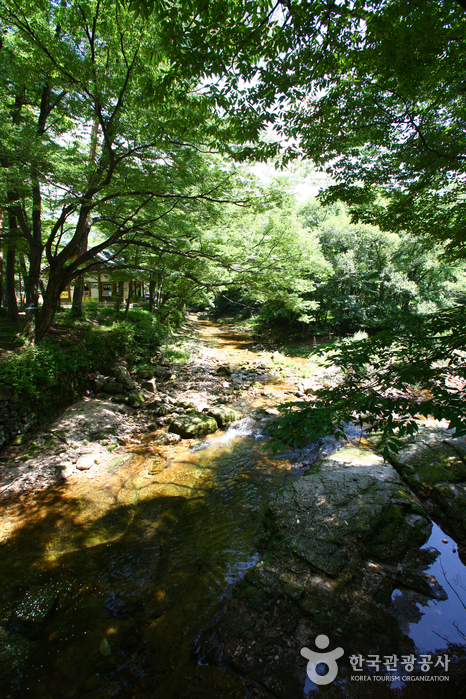
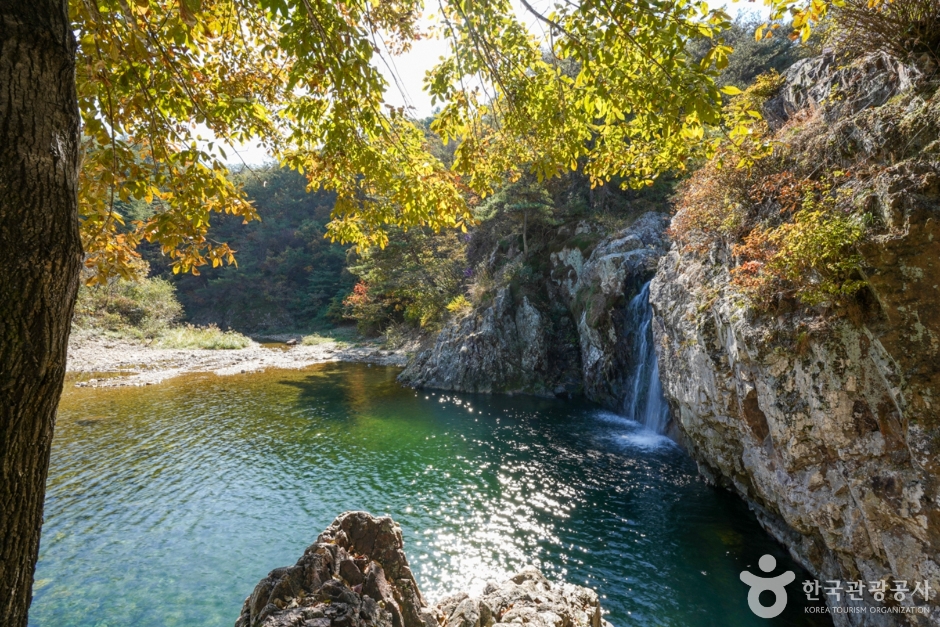
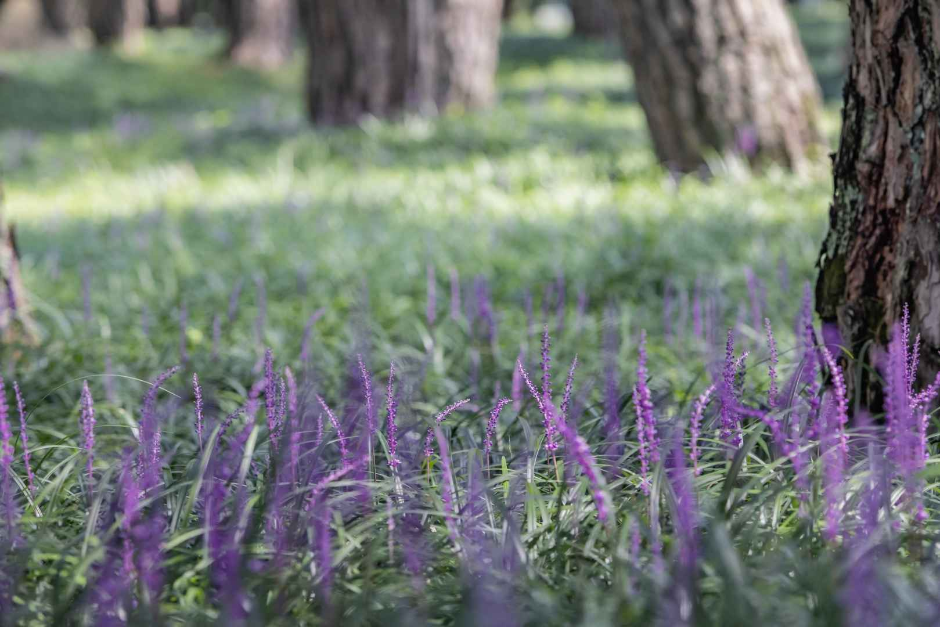
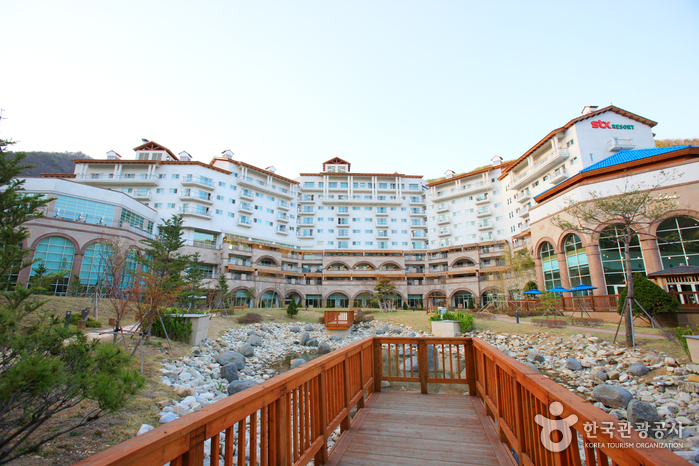
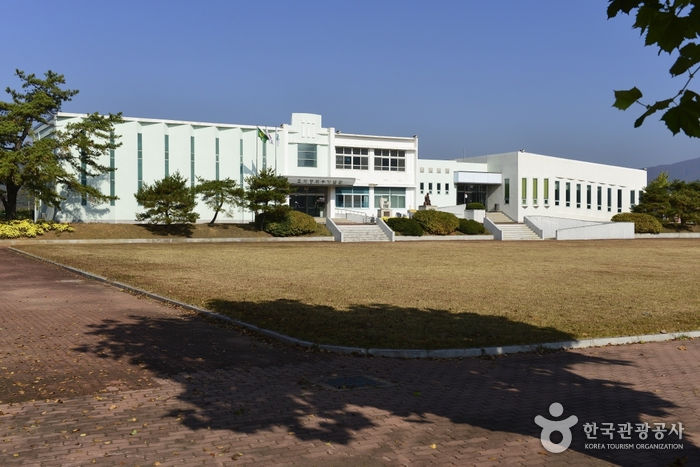
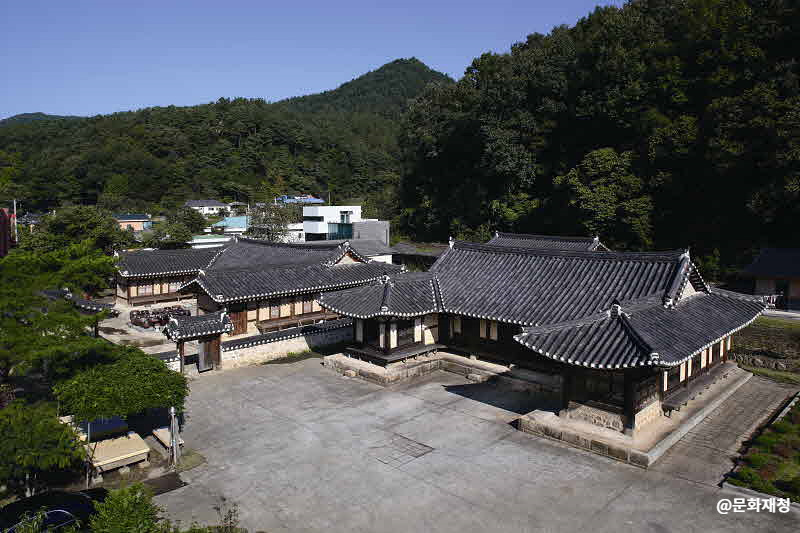

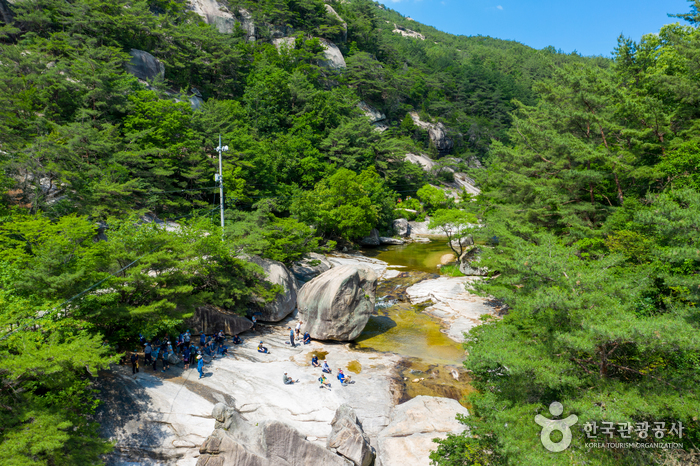
 English
English
 한국어
한국어 日本語
日本語 中文(简体)
中文(简体) Deutsch
Deutsch Français
Français Español
Español Русский
Русский